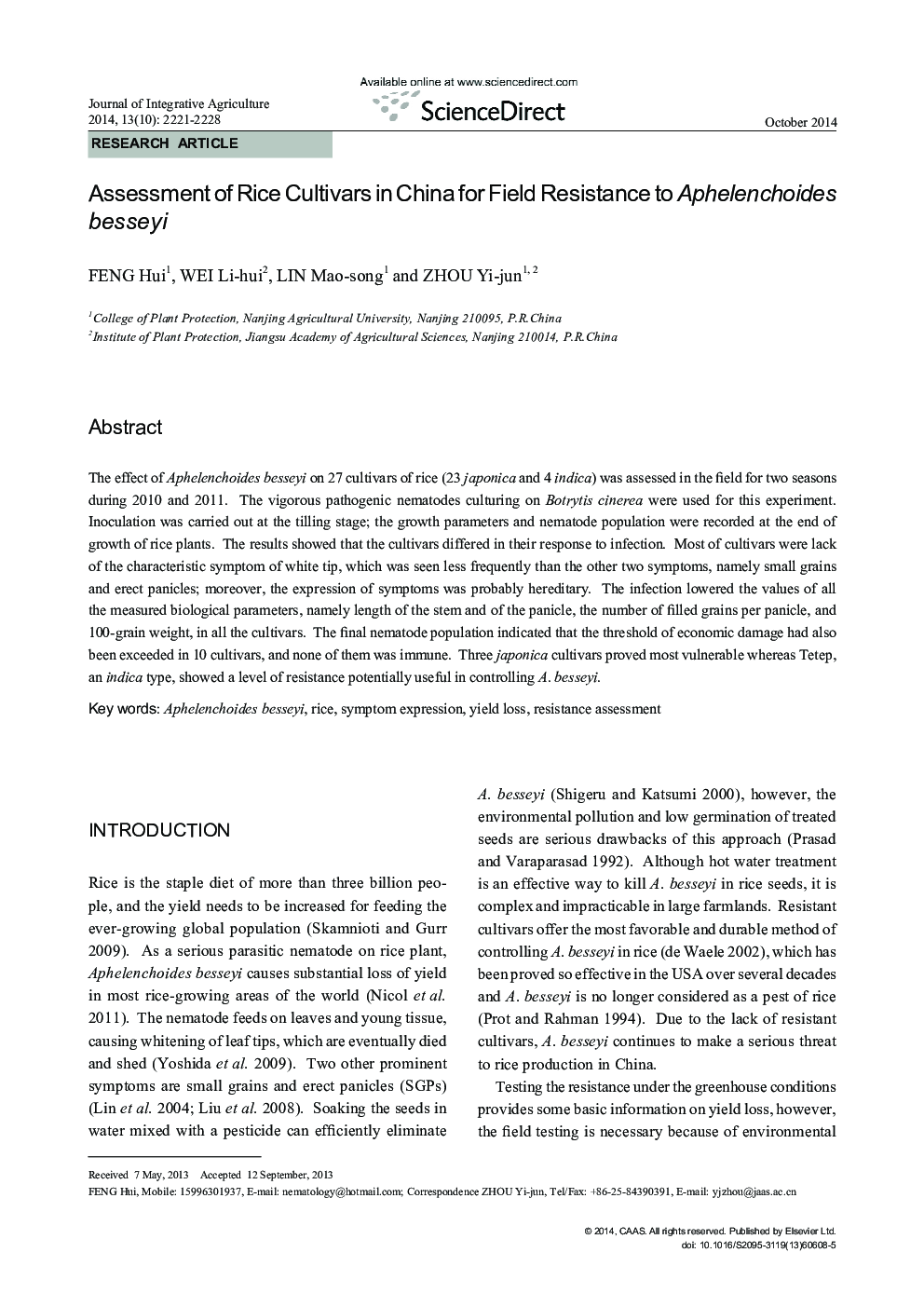| Article ID | Journal | Published Year | Pages | File Type |
|---|---|---|---|---|
| 4494494 | Journal of Integrative Agriculture | 2014 | 8 Pages |
The effect of Aphelenchoides besseyi on 27 cultivars of rice (23 japonica and 4 indica) was assessed in the field for two seasons during 2010 and 2011. The vigorous pathogenic nematodes culturing on Botrytis cinerea were used for this experiment. Inoculation was carried out at the tilling stage; the growth parameters and nematode population were recorded at the end of growth of rice plants. The results showed that the cultivars differed in their response to infection. Most of cultivars were lack of the characteristic symptom of white tip, which was seen less frequently than the other two symptoms, namely small grains and erect panicles; moreover, the expression of symptoms was probably hereditary. The infection lowered the values of all the measured biological parameters, namely length of the stem and of the panicle, the number of filled grains per panicle, and 100-grain weight, in all the cultivars. The final nematode population indicated that the threshold of economic damage had also been exceeded in 10 cultivars, and none of them was immune. Three japonica cultivars proved most vulnerable whereas Tetep, an indica type, showed a level of resistance potentially useful in controlling A. besseyi.
